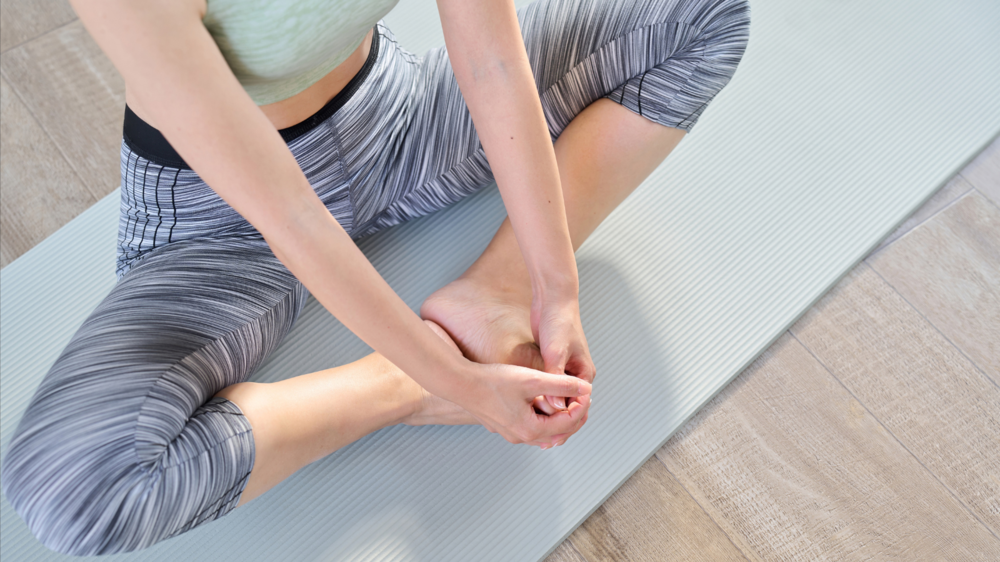In this article:
All these organs and muscles are affected during pregnancy, disrupting their normal functions. You might face challenges during faecal or urinary activities since the vaginal walls and uterus become weak. Pregnancy causes trauma to the pelvic floor, leading to several problems.
Pelvic Floor: An Overview
The pelvic floor provides support for some internal organs to rest on, such as the bowel, bladder, and uterus. It also plays a vital role in childbirth, sexual function, and bladder and bowel control.- Providing support to pelvic organs: The organs located in the pelvic region rest on the pelvic floor. It helps to prevent them from falling out of their dedicated places and maintain their correct position.
- Continence: The pelvic muscles ensure that urine or faeces aren’t leaking and maintain their release with the help of sphincter muscles.
- Sexual function: Pelvic floor muscles contribute a lot to maintaining sexual functions in men and women. While it contributes to sensation and orgasm in women, it supports erectile function in men.
- Breathing: The lungs can expand adequately because the pelvic floor muscles relax during inhalation and exhalation.
- Childbirth: Having robust and flexible pelvic muscles is essential for successful conception. It supports several functions during the process such as the baby's descent and facilitates vaginal delivery. Labour can lead to pelvic floor disorders, but strong pelvic floor muscles are essential for you to prevent them.
- Core stability: The pelvic floor, including muscles in the abdominal and back regions, plays a crucial role in maintaining core stability.
- Fluid circulation: The pelvic floor also aids fluid circulation throughout the body, whether it is venous or lymphatic circulation.
How Does the Pelvic Floor Affect Your Bodily Functions?
The pelvic floor can either support a healthy pregnancy or contribute to pregnancy complications. If the pelvic muscles become tight and rigid, it can lead to various issues.Tight sphincter muscles
Pelvic congestion
Dislocation of pelvic organs
Factors Affecting Pelvic Floor Health During Pregnancy
During pregnancy, physical changes like the growing baby and uterus, along with hormonal shifts, put extra pressure on and soften the pelvic floor muscles. These factors can weaken pelvic floor function, affecting support and control.Physical changes
Constipation is also common during pregnancy, as the growth of the foetus causes hormonal changes which result in digestive issues. This also puts a significant strain on the pelvic floor muscles, and you may experience difficulties passing stools.
Hormonal changes
Medical history matters
Pelvic Floor Dysfunction in Women
The pelvic floor muscles comprise a group of muscles that support various pelvic organs, including the bladder, uterus, and bowels. The contraction and relaxation of these muscles regulate the flow of stool and urine in your body.These muscles also affect your sexual health. A firm and flexible pelvic floor can make sex more pleasurable and enhance orgasms. Additionally, it provides essential support during childbirth.
When these muscles don’t function properly, it leads to pelvic floor disorders. This term isn’t a specific condition but an umbrella term that encompasses various disorders caused by pelvic muscle dysfunction. These issues can result in problems with urination, bowel movements, and even sexual health.
Causes of pelvic floor dysfunction
- There isn't a single cause for pelvic floor dysfunction, but several factors can increase the risk:
- Blunt force trauma to the pelvic region
- Overtraining or straining of the pelvic muscles
- Previous pelvic surgeries, such as a hysterectomy or prostatectomy
- Pregnancy and childbirth
- Age-related muscle weakening
- Stress and anxiety
- Connective tissue disorders
Symptoms of pelvic floor dysfunction
There are several signs that may indicate pelvic floor dysfunction:- Difficulty urinating, with frequent start-and-stop flow or pain during urination.
- Excessive straining to pass stool, sometimes needing to use your hand or change positions on the toilet to help it pass.
- Persistent constipation is common in those with pelvic floor dysfunction.
- Urine leakage when coughing, laughing, exercising (stress incontinence), or feeling an urgent need to go (urge incontinence).
- Trouble fully emptying your bowels or experiencing bowel leakage.
Diagnosis and Treatment of Pelvic Floor Dysfunction
Pelvic floor dysfunction often doesn’t have a single identifiable cause. Many people seek help from a gynaecologist or a colorectal or genitourinary specialist when experiencing problems with urination or bowel movements. However, there are specific methods to accurately diagnose the underlying cause of pelvic floor disorders.How to test Pelvic Floor Dysfunction in women?
There are physical exams to diagnose pelvic floor dysfunction. However, other methods can also be used to test these conditions.- Anal manometry: A little tube is inserted into the anus with a tiny balloon attached. This is slightly inflated and measures the pressure of the sphincter muscles.
- Vaginal manometry: A perineometer is inserted into the vagina, the same way anal manometry is conducted.
- Cystoscopy: A tiny camera and light are attached to a thin tube. This is inserted into the bladder and urinary tract to observe problems.
- Dynamic defecography: This method utilises a thick radiopaque enema and X-ray imaging to assess the movement of the pelvic floor and bowel function.
- Endoanal ultrasound: A slim stick is inserted into the rectum. The ultrasound checks the texture of the sphincter muscles and anal canal.
- Urodynamics: This test is performed to check the functionality of the bladder and urinary tract. Urodynamics is quite helpful in detecting urinary leakage.
Treatment for Pelvic Floor Dysfunction in Women
There is no need to be concerned, as these conditions are treatable, mostly cost-effective, minimally invasive and don't require intense medical intervention.- Physical therapy: This treatment is effective and painless. It is done with the help of physiotherapy and special sensors. This can help the muscles become stronger and function better.
- Pelvic Floor Massage: You can consult a physiotherapist, and they can help to relieve the strain on your muscles internally. It can be performed either by vaginal massage or rectal massage which contributes to easing your pain and improving mobility of the muscles and tissues.
- Medication: Pelvic floor disorders can be reduced with the help of muscle relaxants.
- Breathing exercises: Deep breathing exercises help the pelvic floor move freely by allowing the diaphragm to expand. You can train your pelvic floor muscles with these simple methods.
- Yoga: Yoga is beneficial for strengthening and toning the pelvic muscles. This is beneficial for individuals with all sorts of pelvic floor dysfunction.
- Kegel Exercises: These exercises target the muscles in your pelvic region to strengthen them. It can help improve the function of the uterus, rectum and bladder. To do this exercise, try to squeeze the muscle in your rectum or bladder as if you’re stopping urine or faeces midway. Engage those muscles for a while before relaxing them, and repeat this exercise for 3 sets of 10 repetitions. However, be sure not to overdo Kegels, as this can lead to excessive muscle stiffness.
- Posture and Daily Habits: Maintaining a healthy and steady posture is essential for preserving the tensile strength of your pelvic girdle. Ensure you’re not slouching too much while walking or hunched, as this can transfer strain to specific parts of your muscles, leading to overexertion.
- Surgery: In severe cases, where organs prolapse and there are complications with urination and defecation, surgery is required. However, this happens in extreme conditions, and most pelvic floor disorders don't require surgery.
Fertility Exercises to Improve Pelvic Health
There are several exercises which can improve your fertility. According to fertility experts, caring for your pelvic region can enhance your fertility outcomes. These exercises are more effective and cost less than medical treatments, and can improve the health of your pelvic floor. These exercises are easy to do and can be done in less than half an hour.Breathe
You can increase the mobility of your pelvic floor and improve circulation through diaphragmatic breathing. It helps to relax your nervous system and muscles.Relax your jaw and shoulders, resting one hand on your belly and the other over your chest. Take a deep, slow and gentle breath. Feel your abdomen and lungs expand. Finally, breathe out gently and let your shoulders fall slowly and your belly fall back in.
Child’s Pose
Sit down on the floor with your knees bent, ensuring your toes are touching each other. Ensure your knees are positioned wider than your hips. Slightly tilt backwards till you feel your hips touching your heels. Stretch your arms forward and exhale deeply. Continue this for 5 to 10 repetitions.Sphinx Pose
Lie down on the floor, on your stomach. Place your hands on the floor next to your shoulders, keeping your elbows straight. Ensure your thighs, pubic bone, and the top of your toes are gently resting on the floor with plenty of contact.Now, lift from the floor (like you do in a push-up) and expand your chest forward. Engage your shoulder muscles and take 5-10 deep breaths while holding this position. While going down, exhale the air in your lungs firmly and return to the initial position.
Happy Baby Pose
Lie down on the floor on your back, and bring your knees to your belly (resembling a baby). Take a deep breath and hold the edge of your feet. Ensure your knees are open wider than your chest, stretching them towards your armpits. Repeat this process for 5-10 breaths.Cat-Cow Pose
Get down on your palms and knees. Ensure that the space between your palms is adjacent to your shoulder width, and the gap between your knees is equal to your hips.Take a deep breath and start lowering your back, tilting your head back. While exhaling, engage your core muscles and bring your abdomen in. This is one complete repetition for this exercise. Keep repeating this for 5-10 breaths.
While there isn't any connection between pelvic floor disorders and fertility issues, it undoubtedly plays a massive role during childbirth. If this isn't addressed promptly, PFD can become a barrier during intercourse. Severe PFD can also complicate the diagnosis and treatment of fertility issues.
If you are experiencing symptoms of pelvic floor disorders, it can lead to complications during pregnancy. Consulting a professional for advice can be helpful, as fertility experts can diagnose your condition and proceed with a treatment tailored to you.
In addition to medical intervention, lifestyle adjustments can also play a significant role in preventing PFD. Staying fit, exercising regularly, maintaining a balanced diet, and managing stress can help reduce the risk of pelvic floor disorders.
FAQs on Your Pelvic Floor and Fertility: Why It Matters Before Pregnancy
- Can stress affect the pelvic floor and fertility?
Stress can be quite harmful to your body. Not only are your pelvic function and fertility compromised, but several other functions in your body can be disrupted due to raised cortisol levels. Chronic stress can lead to tight and overactive pelvic muscles. This interferes with the blood flow. Sexual health and fulfilment are also affected by stress. - Are pelvic floor exercises beneficial for men’s fertility, too?
Absolutely! Men also benefit significantly from pelvic exercises. It improves their fertility by enhancing blood circulation and erection function. Better prostate health means better sperm motility and sexual function. Kegel exercises or deep core workouts can be beneficial for both men and women.






